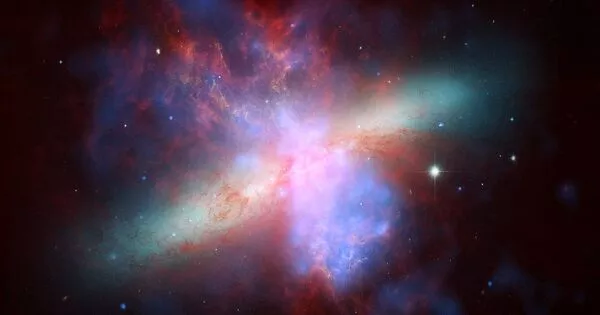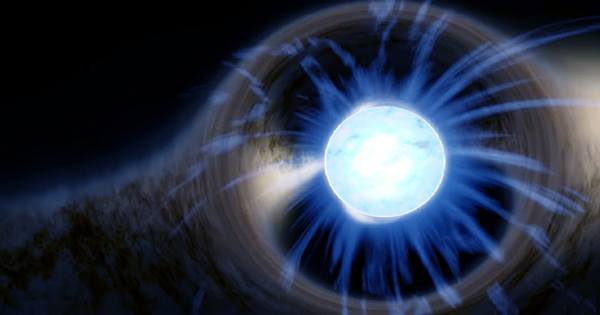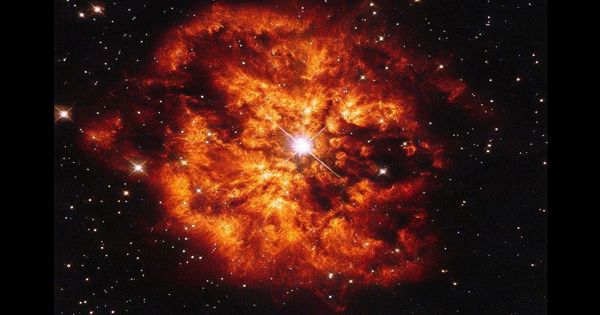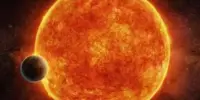An irregular galaxy, as opposed to a spiral or an elliptical galaxy, lacks a distinct regular shape. Irregular galaxies do not fit into any of the Hubble sequence’s regular classes, and their appearance is often chaotic, with no nuclear bulge or trace of spiral arm structure. It is one that lacks a distinct, symmetrical shape, such as spiral or elliptical galaxies. In contrast, irregular galaxies lack a well-defined structure and frequently have chaotic or irregular shapes. They are distinguished by the irregular distribution of stars, gas, and dust, as well as the absence of prominent spiral arms or central bulges seen in other types of galaxies.
The size, mass, and brightness of irregular galaxies can vary greatly. Some irregular galaxies are small and faint, whereas others can be massive and luminous. They can also show a wide range of star formation activity, from active star-forming regions to galaxies with very little ongoing star formation. They are thought to account for about a quarter of all galaxies. Some irregular galaxies were previously spiral or elliptical galaxies that were deformed by an uneven external gravitational force. Gas and dust may be abundant in irregular galaxies. This isn’t always the case with dwarf irregulars.
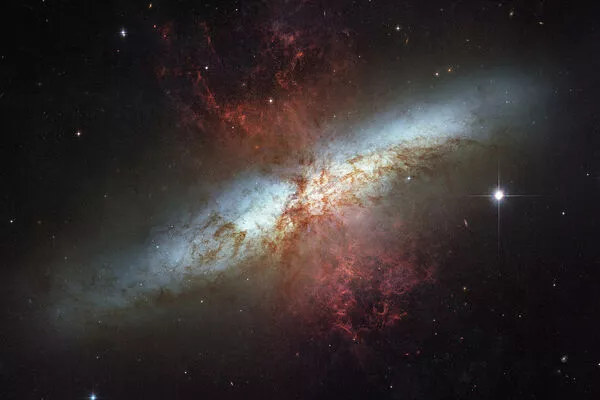
Irregular galaxies are typically small, about one-tenth the size of the Milky Way. They are vulnerable to environmental effects such as colliding with large galaxies and intergalactic clouds due to their small size.
There are two main types of irregular galaxies:
- Irr-I (Irr-Irr) galaxies: These are sometimes referred to as “irregular dwarf galaxies” and often have a more clumpy appearance. They contain large amounts of gas and dust, and their irregular shape is thought to be a result of gravitational interactions with other galaxies.
- Irr-II (Irr-IIrr) galaxies: These galaxies are sometimes called “irregular magellanic spirals” because they resemble smaller versions of the Large and Small Magellanic Clouds, which are satellite galaxies of the Milky Way. Irr-II galaxies have a more organized structure compared to Irr-I galaxies and may exhibit hints of spiral arms.
Irregular galaxies, particularly in the local universe, are thought to be less common than spiral and elliptical galaxies. They are frequently found in areas of the universe where gravitational interactions and galaxies mergers are more common, such as galaxy clusters or areas of high galactic density. These interactions can disrupt galaxies’ orderly structure, resulting in the formation of irregular galaxies.
The study of irregular galaxies provides valuable insights into galaxy formation and evolution processes. They are thought to be a transitional stage in galaxy evolution, as they may eventually settle into more stable structures such as spiral or elliptical galaxies as a result of interactions and mergers with other galaxies.
